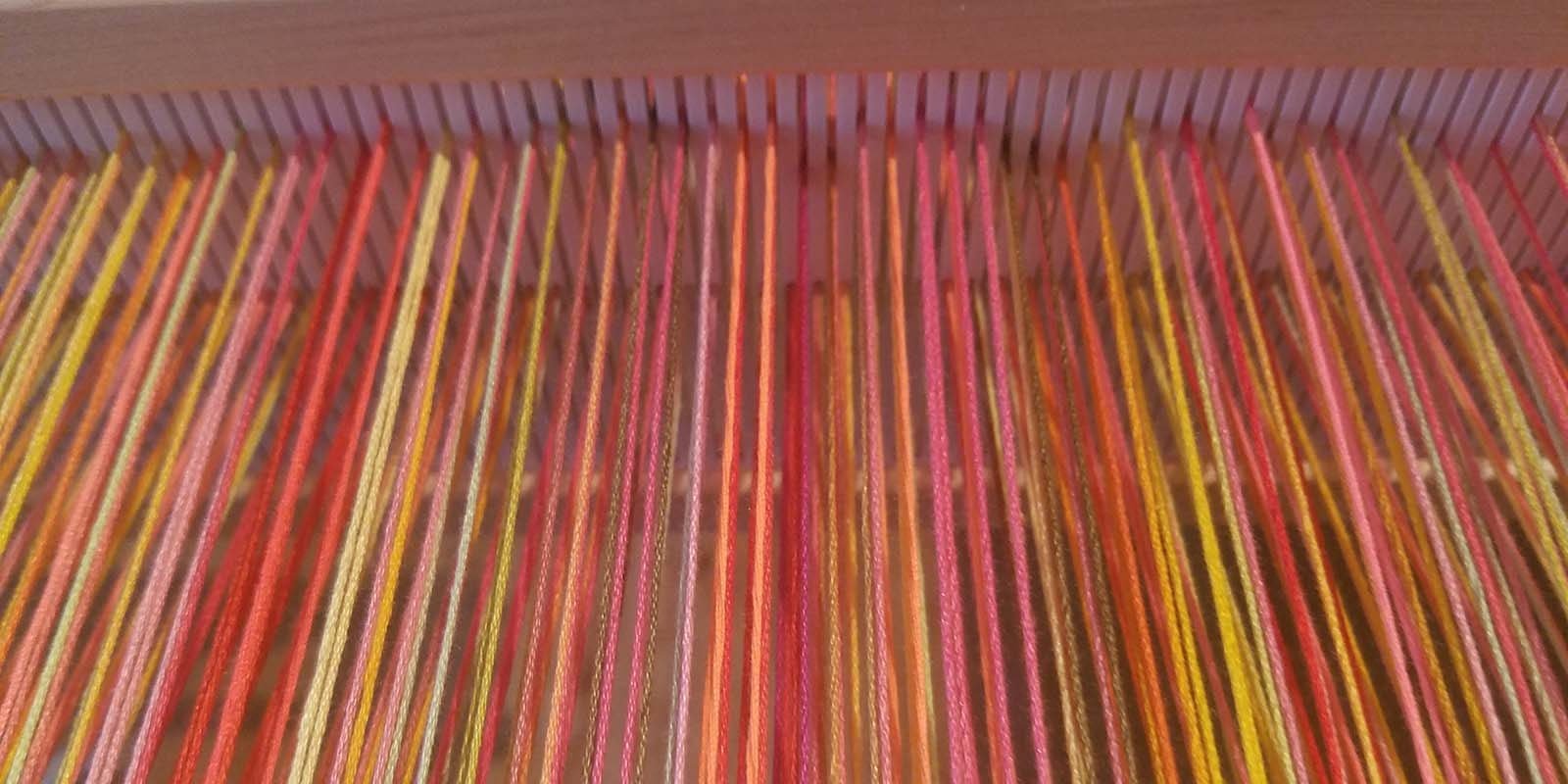Whatever anyone tells you, size matters. Loom width is the bane of many a weaver. That 15-inch to 21-inch rigid-heddle or table loom that fits in your home and your life may be your pride and joy, but when it comes time to make a baby blanket, a wide shawl, or a standard-sized dish towel, you have to become resourceful. Even with floor looms, unless you have some kind of commercial loom, you'll likely need to improvise to weave a bath towel or full-sized coverlet.
(I did see a production Toika loom once that must have been 90 inches wide. The bench was on a rail, so the weaver could throw the shuttle at one side, kick off, and slide to the other side to catch it. If I'd had the space and money, I'd have bought it for the sheer aerobic joy.)
If you want to weave cloth wider than your loom, you have a few choices. You can weave doublecloth that is open on one selvedge.
Jane Patrick's book The Weaver's Idea Book shows how it can be done on a rigid-heddle loom with two heddles. I find doubleweaving to be pretty magical, although it takes time and careful attention to keep the layers separate.
The other time-honored choice is to weave your cloth in narrower panels and then join them. The trick here is to keep length consistent, match any patterns, and make the joins attractive or invisible. African Kente cloth is woven in long strips and joined, and I have seen backstrap-woven mantas in Peru joined with stitching and embroidery that becomes part of the overall design.

Sara Bixler's clever method for weaving projects wider than your loom. Learn how it's done in her video!
One of the cleverest solutions I've seen in a long time is Sara Bixler's no-sew technique for joining narrow woven strips into blankets. Sara has developed a way to weave loops and basically crochet the panels together. No matching, no seams, and it looks great. Sara's done a great video on the technique in which she makes several beautiful baby blankets, but you could use her ideas to make blankets, coverlets, or even really cool kitchen towels.
The moral of this story is: size matters, but the cleverness of the weaver matters more!


